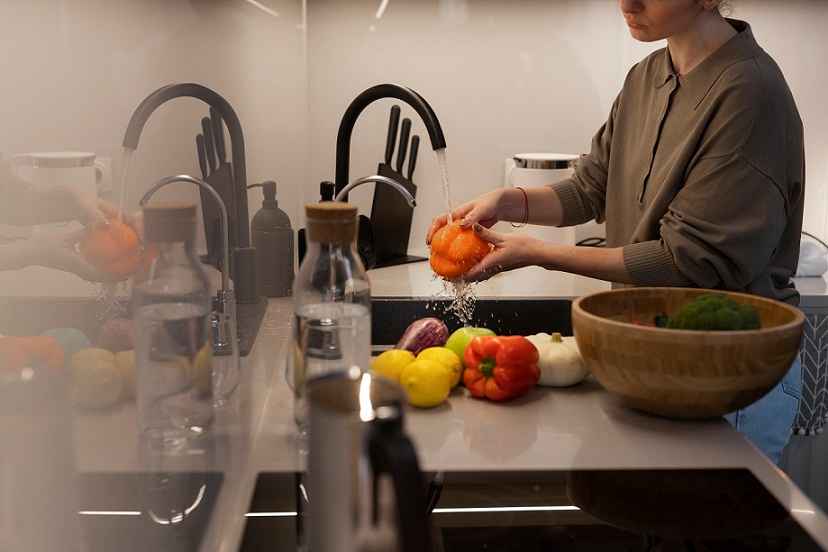
Step-by-Step Guide: How to Remove a Kitchen Faucet Like a Pro
Are you tired of that old, leaky kitchen faucet ruining your culinary vibes? Or perhaps you’re ready to upgrade to a stylish new fixture that complements your modern décor? Whatever the reason, removing a kitchen faucet might seem like a daunting task—but it doesn’t have to be! With the right tools and a little know-how, you can tackle this DIY project with confidence. In our step-by-step guide “How to Remove a Kitchen Faucet Like a Pro,” we’ll walk you through the entire process, turning what could be an overwhelming chore into an empowering experience. Say goodbye to plumbing fears and hello to your inner handyman (or handywoman)! Let’s dive in and get that faucet out—your dream kitchen awaits!
Introduction: Why you may need to remove a kitchen faucet and the benefits of doing it yourself
Are you tired of your old kitchen faucet? Maybe it’s leaking, outdated, or simply not working like it used to. Removing a kitchen faucet may seem daunting, but it can actually be a straightforward task that saves you time and money. Tackling this job yourself means you can avoid costly plumber fees and gain the satisfaction of completing a home improvement project on your own. Plus, with the right tools and guidance, you’ll feel empowered as you transform your kitchen space. Let’s dive into how to remove that stubborn faucet like a pro!
Gather your tools: A list of necessary tools and materials for the task
Before diving into the project, it’s essential to gather the right tools. Having everything on hand will save you time and frustration later.
Start with a basin wrench. This handy tool helps reach those tricky nuts that hold your faucet in place.
Next, grab an adjustable wrench. It’s versatile and perfect for loosening or tightening fittings.
Don’t forget pliers! They can provide extra grip when needed.
A screwdriver set is also crucial. You’ll likely encounter various screws during removal.
Have a bucket ready to catch any residual water from the pipes.
Lastly, keep some rags nearby for spills or cleaning up afterward.
With these tools at your side, you’ll be well-prepared to tackle that kitchen faucet removal like a pro!
Prep work: Steps to take before starting the removal process, including turning off water supply and clearing out under-sink area
Before diving into the task of removing your kitchen faucet, it’s essential to prepare adequately. Start by turning off the water supply. Locate the shut-off valves under your sink and twist them clockwise until they stop. This will prevent any unexpected sprays while you work.
Next, clear out the area beneath the sink. Remove any cleaning supplies or storage items that might obstruct your movement. A clean space not only makes it easier to access everything but also helps you avoid misplacing tools.
Consider laying down a towel or basin to catch any residual water from pipes when you disconnect them. Taking these small steps ensures a smoother removal process and keeps your workspace tidy throughout the project. Being organized now will save time later on!
Step-by-step instructions: Detailed guide on how to remove a kitchen faucet, including loosening connections, removing old faucet, and cleaning the area
Start by placing a bucket or towel under the sink to catch any water that may spill. This small step can save you from a larger mess later.
Next, use an adjustable wrench to loosen the nuts securing the water supply lines. Turn them counterclockwise until they release. Be gentle; overtightening can cause damage.
After disconnecting the lines, it’s time to tackle the faucet itself. Locate and unscrew any mounting clips or bolts holding it in place, usually found underneath the sink.
Once those are removed, gently lift the old faucet out of its housing. You might need to wiggle it slightly if there’s buildup around its base.
With everything out of the way, take a moment to clean up any debris or residue left behind. A clean surface prepares you for installing your new kitchen faucet with ease and precision.
Common mistakes to avoid: Tips on avoiding potential problems during the removal process
Removing a kitchen faucet can be straightforward, but mistakes can complicate the process. One common error is not having the right tools on hand. Make sure you have adjustable wrenches, basin wrenches, and screwdrivers ready to avoid frustration halfway through.
Another pitfall is neglecting to turn off the water supply. This simple step prevents unexpected spills that could create a mess or damage your cabinetry.
Also, don’t rush when loosening connections. Applying too much force may cause pipes or fittings to break. Take your time and use penetrating oil if necessary for stubborn parts.
Lastly, keep track of all screws and washers as you remove them. Losing even one piece can delay reinstallation later on. Organizing these components will save you headaches down the line and ensure everything fits back together seamlessly.
Bonus tips: Additional tips for making the task easier and more efficient
Before you start, consider taking photos of your current setup. This can serve as a handy reference when you’re ready to install the new kitchen faucet.
Have some rags or towels on hand. Water may still trickle out during disconnection, and these will help keep things tidy.
If the connections are stubborn, try using penetrating oil. A little spray can make loosening those fittings much easier.
Label parts as you remove them. It’ll save time and confusion later when it’s time for reassembly.
Finally, take breaks if needed. Rushing through could lead to mistakes or accidents in this detailed task. Give yourself space to think clearly and work efficiently without stress.
Conclusion: Final thoughts and recommendations for future maintenance or installation.
Removing a kitchen faucet can seem daunting, but with the right tools and guidance, anyone can handle it. The DIY approach not only saves you money but also gives you a sense of accomplishment. After successfully removing your old kitchen faucet, take some time to clean the area thoroughly before installing a new one.
Consider checking for any leaks or wear in the supply lines during this process; addressing these issues now will save time and hassle later on. Regular maintenance is key to ensuring your faucets function correctly over their lifespan.
As you go forward with your plumbing projects, remember that preparation is essential. Always have your tools ready and double-check that you’ve turned off the water supply before starting any work under the sink. Whether you’re replacing an outdated fixture or upgrading for aesthetic reasons, taking care of these tasks yourself fosters greater confidence in home repairs.
Stay proactive about maintenance by periodically inspecting all connections and hoses beneath your sink for signs of wear or leaks—this practice can prevent bigger problems down the line. Happy DIYing!


